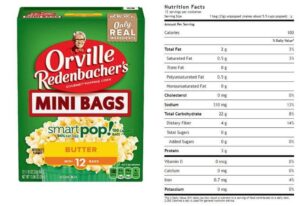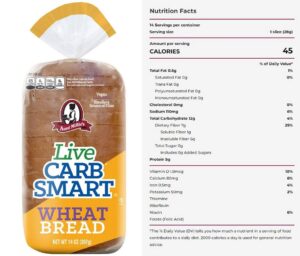6 min read, 1123 words
Amino Acids: The LEGO Blocks of Protein
Think of protein like a house, and amino acids like individual LEGO blocks. You’ve heard “eat more protein” a million times from trainers, nutritionists, and that overly enthusiastic gym buddy who talks way too much between sets. But what the heck IS protein actually? If you’ve ever stared at a nutrition label feeling confused, or wondered why everyone’s obsessing over these mysterious “amino acids,” you’re not alone. Let’s break this down without the science headache – I promise it’s simpler than you think.
What Are Amino Acids, Really?
Amino acids are the individual building blocks that link together to make proteins. Think of it like this: if protein is a word, amino acids are the individual letters. Or if protein is a recipe, amino acids are the specific ingredients. Just like you need different letters to spell different words, your body needs different combinations of amino acids to build different types of proteins.
Why does this matter? Because different combinations create proteins with completely different jobs. The protein that builds your biceps is totally different from the protein that helps digest your breakfast burrito. Your body is basically running a 24/7 construction site, and amino acids are the raw materials showing up in the delivery truck.
There are 20 different amino acids total, and your body is pretty picky about getting the right mix to keep everything running smoothly.
The Essential vs. Non-Essential Breakdown
Here’s where it gets interesting. Those 20 amino acids fall into two camps: essential and non-essential.
Essential amino acids (9 total): Your body can’t make these on its own – you MUST eat them. Think of your body throwing up its hands and saying, “Nope, I need help with these ones!” These are like that friend who can’t cook and needs you to bring dinner.
Non-essential amino acids (11 total): When not consumed in your diet, your body’s got this covered and makes them internally. These are like that self-sufficient friend who always has their life together and meal preps on Sundays.
Here’s the catch though: while your body can manufacture these non-essential amino acids, there’s a daily production limit. Think of it like your body’s internal factory – it can only make so much each day. For optimal results, especially if you’re active or trying to build muscle, it’s better to eat a full range of proteins containing both essential and non-essential amino acids. Why make your body work overtime when you can just eat a well-rounded diet?
Quick reality check: “Essential” doesn’t mean more important – it just means your body’s basically outsourcing the job to your diet. Both types are crucial for keeping you healthy and strong.
The nine essential amino acids have names that sound like they came from a chemistry textbook (which they did), but you don’t need to memorize them. Just know that your body needs all nine to function properly.
BCAA Spotlight: The Muscle-Building MVPs
Now, let’s talk about the celebrities of the amino acid world: BCAAs, or Branched-Chain Amino Acids. These are three of those essential amino acids that get all the gym hype: leucine, isoleucine, and valine. Don’t worry about memorizing those tongue-twisters – just know they’re basically the muscle repair crew.
Why do they get so much attention? Unlike other amino acids that need to take a detour through your liver, BCAAs go straight to your muscles like they’ve got VIP passes. They’re particularly good at triggering muscle protein synthesis or MPS (fancy talk for “building and repairing muscle”) and helping you recover after workouts. Leucine, in particular, is like the foreman on the construction site – it’s the main signal that tells your muscles “time to start building!” and is considered the most important BCAA for kickstarting the muscle repair process known as muscle protein synthesis.
Here’s the real talk though: if you’re eating decent protein sources throughout the day, you’re already getting plenty of BCAAs. Your grilled chicken, scrambled eggs, glass of milk, and that salmon dinner? They’re all loaded with these muscle-building superstars.
Foods particularly rich in BCAAs include chicken, eggs, milk, fish, beef, and other animal proteins. Even some plant sources like soybeans pack a decent BCAA punch.
Complete vs. Incomplete Proteins
This is where the rubber meets the road. Proteins are labeled as either “complete” or “incomplete” based on their amino acid lineup.
Complete proteins have all nine essential amino acids, including our BCAA friends. It’s like getting the full tool kit – everything you need is in the box. Most animal proteins (meat, fish, eggs, dairy) are complete proteins. Quinoa is the plant world’s overachiever in this category.
Incomplete proteins are missing some pieces of the puzzle. Most plant proteins fall into this category – they’re great, but they’re like getting a tool kit with a few missing screwdrivers.
Here’s the myth buster: You don’t need to stress about getting perfect, complete proteins at every single meal. Your body isn’t operating on a meal-by-meal basis – it’s got about a 24-hour memory when it comes to amino acids. Eat a variety of protein sources throughout the day, and your body will do the accounting.
Real-World Application
So what does this actually mean for your plate?
Complete protein examples: Chicken breast, turkey breast, lean red meat, salmon, eggs, Greek yogurt, milk, quinoa, buckwheat
Incomplete protein examples: Rice, beans, nuts, most vegetables, wheat
The classic combo strategy? Rice and beans together make a complete protein. Peanut butter on whole grain bread? Also complete. Your body is pretty good at this puzzle-solving thing.
Bottom line: Focus on eating a variety of protein sources throughout the day rather than obsessing over each individual meal. Have some eggs for breakfast, a chicken salad for lunch, and maybe some fish for dinner? You’re golden. Vegetarian? Mix up your plant proteins and you’ll hit all the bases.
The Wrap-Up
Here’s your key takeaway: amino acids are simply the building blocks that make up protein, and your body needs a good variety to keep everything running smoothly. But if you want to know what will actually move the needle the most, it’s this: focus on getting adequate daily protein from a variety of sources, spaced evenly throughout the day.
Aim for around 30 grams of protein with each meal – that’s roughly the amount needed to properly trigger MPS and maximize muscle building and recovery. Think a palm-sized portion of chicken, a couple of eggs with Greek yogurt, or a decent-sized piece of fish. Spread this out across your meals rather than cramming all your protein into one massive dinner.
Your body is smarter than you think – it’ll handle the amino acid math while you focus on the bigger picture: eating well, staying active, and not overthinking every bite. Now go grab some protein and build something awesome.
– Coach Ken 🚀
Which vitamin plays a key role in methylation and red blood cell formation?
Brought to you by your FNN coaches!







